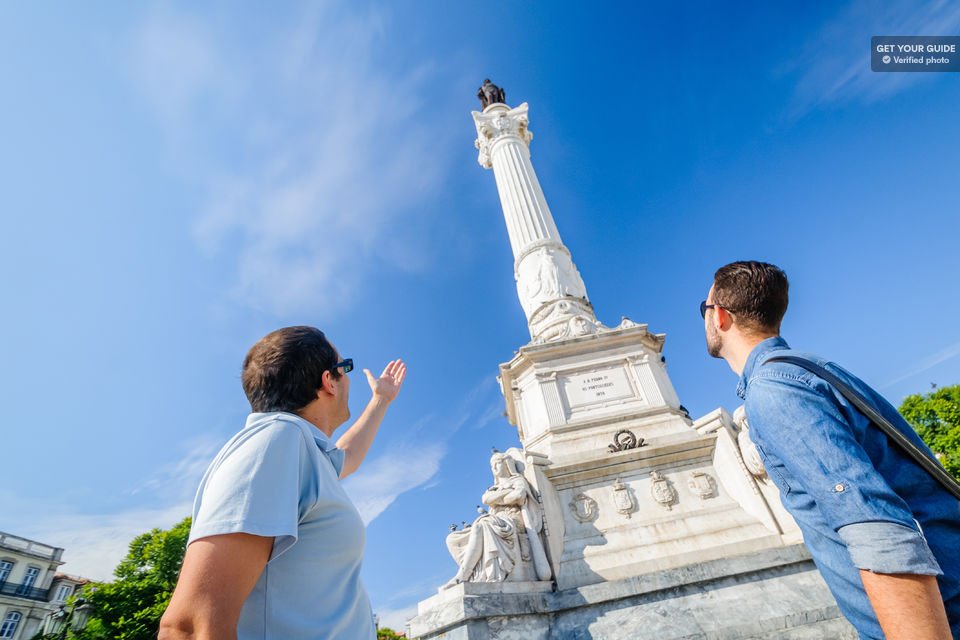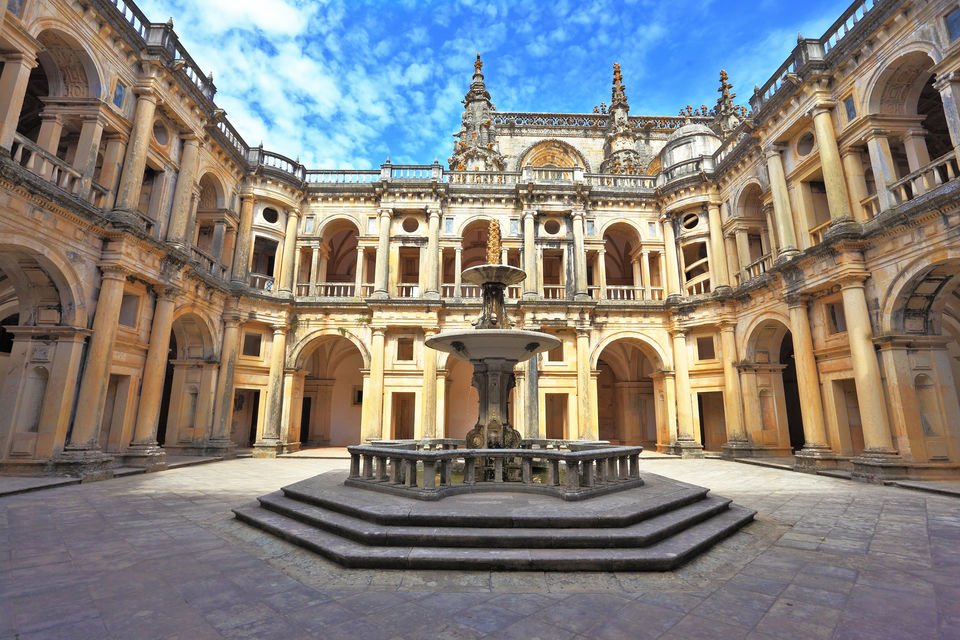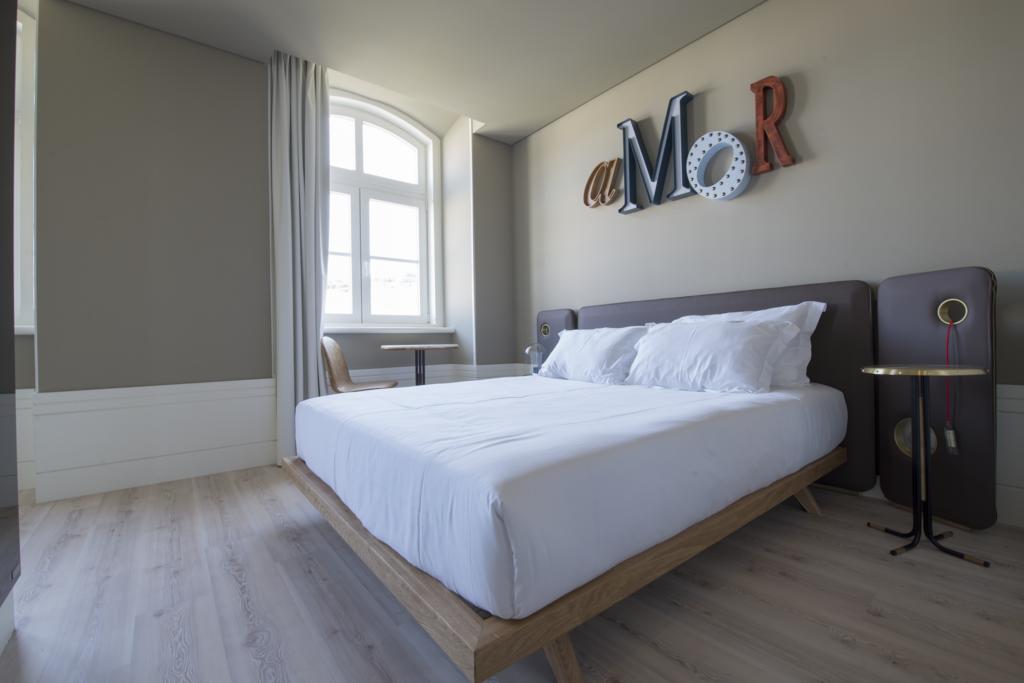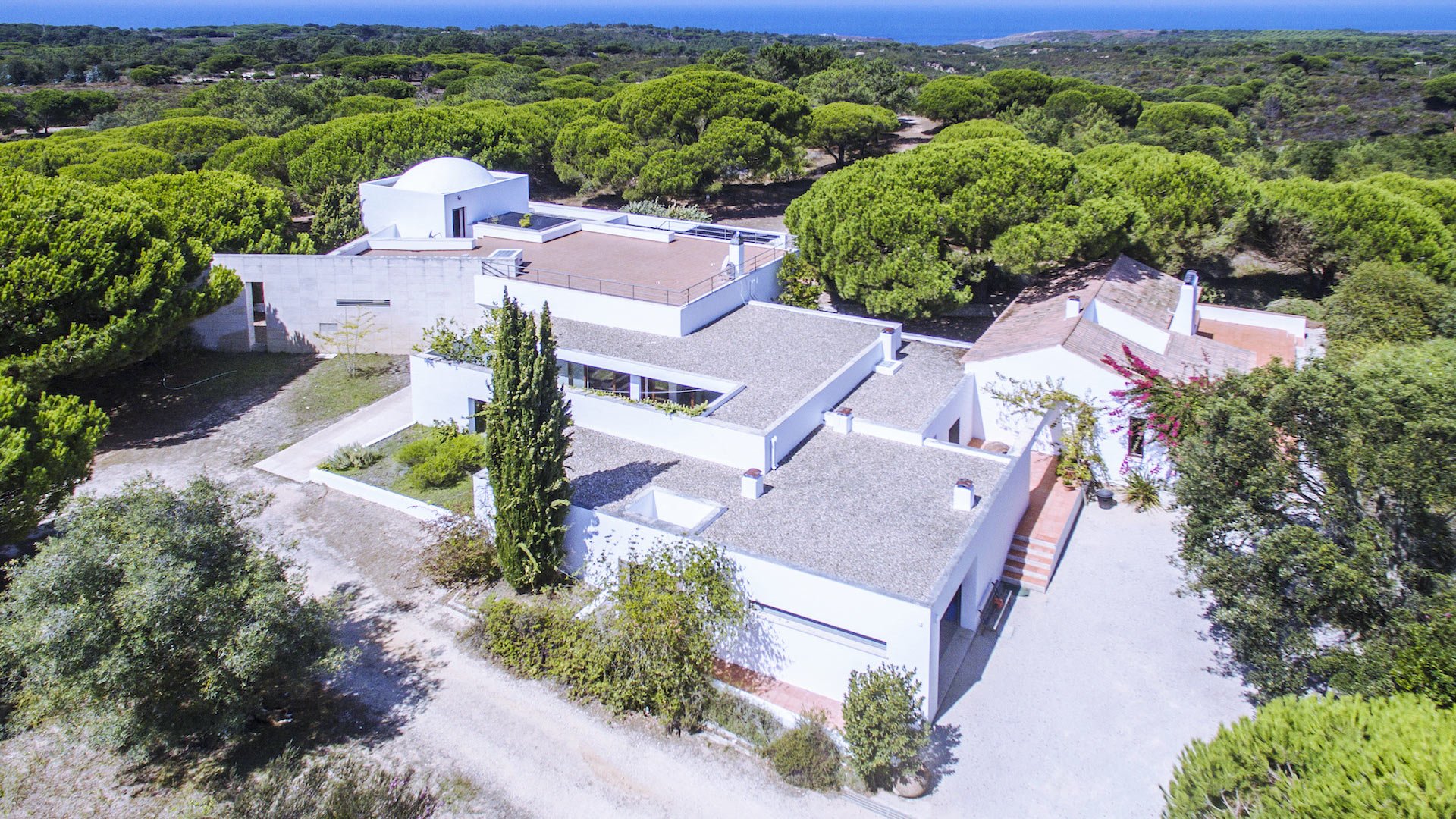Belem Tower in Lisbon
The Belem Tower is an emblematic monument located on the banks of the Tagus River in Lisbon, Portugal. The tower was built in the 16th century to defend the city and protect ships bound for the Indies. Today, it is considered one of the most important symbols of Manueline architecture in Portugal and is a UNESCO World Heritage Site.

Visit the Belem Tower
The Belem Tower is an emblematic monument located on the banks of the Tagus River in Lisbon, Portugal. The tower was built in the 16th century to defend the city and protect ships bound for the Indies. Today, it is considered one of the most important symbols of Manueline architecture in Portugal and is a UNESCO World Heritage Site.
A visit to the Belem Tower is a must for any traveller to Lisbon. With its thick walls and loophole-like windows, the tower offers a breathtaking view of the Tagus and the city. The interior of the tower also houses an exhibition on Portugal’s maritime history, with models of ships and artifacts from the period.
During your visit, you can climb the narrow steps to the roof of the tower to enjoy the panoramic view of the city and its surroundings. It is also possible to visit the rooms and corridors of the tower, which contain art and historical artefacts.
Prices for the Belem Tower
Prices for the Belem Tower are quite affordable, but there are several options depending on your needs. Here is an overview of the prices for the different types of Belem Tower tickets:
- Belem Tower tickets only: Tickets for the Belém Tower cost €8 for adults, €6 for seniors and students, and €4 for children aged 6-12. Children under 6 get in free.
- Tickets for the Belem Tower and Hieronymites Monastery: If you want to visit both sites in one day, tickets cost €12 for adults, €9 for seniors and students, and €6 for children aged 6 to 12. Children under 6 get in free.
- Using the Lisboa Card: If you have the Lisboa Card, you can enter the Belem Tower for free. However, it is important to note that the Hieronymites Monastery is not included in this option.
- Residents of Portugal: If you are a resident of Portugal, you can benefit from reduced rates for the Belem Tower. Tickets cost €6 for adults, €4 for seniors and students, and €2 for children aged 6 to 12. Children under 6 get in free.
In conclusion, the prices of tickets for the Belem Tower are affordable and you can choose the option that suits you best, depending on your situation, needs and means.
Belem Tower: buy tickets
If you want to visit the Belem Tower in Lisbon, there are several options for tickets. The first is to buy a single ticket for the tower alone. However, for those who want to save money and make the most of their trip to Lisbon, buying a Lisboa Card can be a good choice. This card gives you access to more than 25 monuments, museums and attractions in the city, including the Belem Tower, at a reduced rate.
Click on the Lisboa Card to order it online
Special tickets :
- Over 65s and over (with proof): 50% discount
- 1 adult + 2 children under 18: 50% discount
Group tickets:
- Must be booked at least 48 hours in advance for groups of more than 50 people
- Can be purchased one year in advance
- No refunds
- Less than 250 tickets: 7.5% discount
- Between 250 and 500 tickets: 10% discount
- Between 500 and 1000 tickets: 15% discount
Free admission :
- Sundays and public holidays from 10:00 to 14:00 for all Portuguese residents (with proof)
- For children under 12 years old (included)
- For unemployed people living in the European Union (with proof)
- For people with reduced mobility with a degree of disability of more than 60% and 1 accompanying person (with proof)
It is also possible to buy skip-the-line tickets for the Belem Tower, which can be useful during the high tourist season to avoid long queues. Finally, if you wish to combine your visit to the tower with other monuments in Lisbon, there are offers to visit several sites at a reduced rate.
It is important to note that tickets for the Belem Tower and the Hieronymites Monastery can be purchased online or on site. It is therefore always advisable to check availability and current prices before setting off on your trip. Keep in mind that prices for Portuguese residents may differ from those for foreign tourists.
Timetable of the Belem Tower
The opening hours of the Belem Tower are important to consider when planning your visit. It is important to know what time the Belem Tower is open so that you can make the most of your visit. The Belem Tower is open every day, except on public holidays, for visits. Opening times may vary depending on the season, so it is always advisable to check the current times before planning your visit.
- In summer, the Belem Tower is generally open from 10:00 to 19:00.
- In winter, the hours are reduced and the Belem Tower is usually open from 10:00 to 17:30.
It is important to note that the tower may be closed without notice for maintenance or special events, so it is always best to check times in advance to avoid disappointment.
When visiting the Belem Tower, it is advisable to come early in the morning or late in the afternoon to avoid long queues. If you plan to visit the tower and the Hieronymites’ monastery at the same time, it is important to know that the timetable may vary. In general, the monastery is open every day except for public holidays, and the opening hours are usually from 10:00 to 18:00.
Going to the Belem Tower
Are you in Lisbon and want to visit the Belem Tower? There are several options to get to the tower. Here are some tips on how to get there easily.
- Bus: If you prefer public transport, you can take bus number 15E which leaves from the Sete Rios bus station and drops you off at the Belem Tower. This is an affordable and convenient option, but it is important to check the timetable as frequencies can vary depending on the period.
- Metro: You can also take the metro and get off at Belém station. This is a quick and cheap option, but beware that the walk to the tower can be a bit long.
- Taxi: If you prefer convenience, you can take a taxi to the Belem Tower. This is a quick and comfortable option, but a little more expensive. It is important to check the rates with the driver before getting into the taxi to avoid unpleasant surprises.
- Tuk Tuk: For a unique experience, you can opt for a Tuk Tuk to get to the Belem Tower. This is a fun and inexpensive option, but you will need to negotiate the price with the driver before getting on the Tuk Tuk.
Belem Tower: history and construction
The tower was originally built by King John II. It was to be part of a defensive system at the mouth of the Tagus and the main gate of Lisbon.
At the end of the 15th century, John II developed a defensive system based on the fortresses of Cascais to the west of Belém and San Sebastián in Caparica on the south bank of the river. However, as these two buildings did not fully protect the river estuary, the king ordered the construction of a fort where the tower of Belem is located. The king died before construction could begin, so it was abandoned.
It was not until 20 years later that another Portuguese king, Manuel I, realised the strategic importance of the site and ordered the construction of a fortification in the Belem district. Construction began in 1515 with the chief architect Francisco de Arruda. The construction of the Belem Tower was completed in 1519, two years before the death of Manuel I.
The tower is named after Saint Vincent, considered the patron saint of Lisbon.

It is said that the tower was also built to commemorate the opening of the sea route to India by the Portuguese navigator Vasco Da Gama. Interestingly, during construction, the approach to the river mouth was protected by a heavily armed 1000 ton ship called the “Grande Nau”.
In 1580, the Belem Tower was used to defend the mouth from the Spanish. It was at this time and until 1830 that the tower’s dungeons became a prison. At the end of the 16th century, a two-storey building was built over the bastion, giving the tower the appearance it has today. There are sculptural crosses of the Order of Christ.
- From 1633, the tower had a customs office to charge taxes to passing ships.
- From 1780 to 1782, the Fort of Bom Sucesso was built nearby.
- From 1808 to 1814, the French garrison was located here.
- In 1865-67, a lighthouse was installed in the south-eastern part of the building.
- In the 1990s the tower was handed over to the Portuguese Institute of Architectural Heritage.
- The works for the complete renovation of the building were carried out from February 1997 to January 1998.
- On 7 July 2007, the Tower of Belém was included in the list of the 7 Wonders of Portugal.
Torre de Belem: interior and exterior
The tower is made of Liozo limestone. The construction was carried out on a basalt rock near the northern shore of the river. The architectural ensemble of the fort can be divided into two parts: a bastion and a four-storey tower in its northern part.
The appearance of the Belem Tower is amazing. There is a sculpture of a rhinoceros in the northwestern part of the façade, on the right side. You will also see two other statues: Archangel Michael on the right and Saint Vincent on the left.
On the fourth floor, the tower has a balcony with parapets decorated with merlon teeth and a bas-relief of the Cross of the Order of Christ.In the lower part, you can see the cannon holes.The Tower of Belém is accessible via a drawbridge. The main entrance has direct access to the interior of the bastion where the artillery is located. On the outer side of the lower bastion there are embrasures for 17 cannons in the walls.

In the centre is a small open courtyard surrounded by Gothic arches. This structure was used to dissipate the smoke from the cannon fire.
The interior of the bastion, with a round staircase at the northern end, has two adjacent halls with vaulted ceilings. The interior space is divided into several levels.
The Governor’s Hall (Sala do Governador)
The name of this hall is probably related to the fact that in the 16th century the post of governor of the Tower of Belém was created. The first governor was Gaspar de Pive in 1521. The Governor was a representative of the monarch and exercised military, administrative and judicial powers.
The Governor’s room is located on the first floor of the tower. It is reached by a narrow staircase. Here you can find a tank in which rainwater was stored.
The ceiling of this room is vaulted and covered with lime mortar. On the left, a spiral staircase leads to the top of the tower and to other rooms.
Royal Hall (Sala dos Reis)
The Royal Hall of the Belem Tower occupies the second floor of the tower. From this room there is an exit to the balcony on the south façade of the tower. In the northwest corner there is a stone fireplace.
Courtroom (Sala das Audiencias)
The courtroom occupies the third floor of the monument. This room also has a fireplace.
Chapel
On the fourth floor you will find a vaulted chapel. There is an exit to the balcony. There are eight round holes in the floor of this balcony. Through these holes it was possible to repel attacks by throwing shells.
Related Articles
- Helicopter in Lisbon, guaranteed sensations
Once you have visited the capital from the ground and if you want to treat…
- Discover Fado in Lisbon
Fado in Lisbon: 5-star discovery Before immersing yourself in the history of Fado and…
- São Jorge Castle in Lisbon
Visit of Lisbon and the São Jorge Castle Book below your visit to the…
- Lisbon Oceanarium: best aquarium in the world
The Lisbon Oceanarium is one of the most interesting things to do in Lisbon,…
- What to do in Lisbon? Selection of activities!
If you are making the decision to come and live in Lisbon or are…
- Visit Lisbon by bus
Visiting Lisbon by bus is probably one of the favourite activities of tourists in…
- Visit Lisbon: 12 places to discover
Lisbon is one of the oldest cities in Portugal. The city is full of historical buildings,…
- Guided tours of Lisbon: my selection
Ahhh Lisbon! The Portuguese capital is attracting more and more tourists and although I…
- Best Miradouros (Viewpoints) of Lisbon
The Miradouros de Lisboa (Viewpoints) are one of the most pleasant tourist attractions in…
- The Tuk Tuk in Lisbon
The Tuk Tuks have long since established themselves in the city of Lisbon and…










